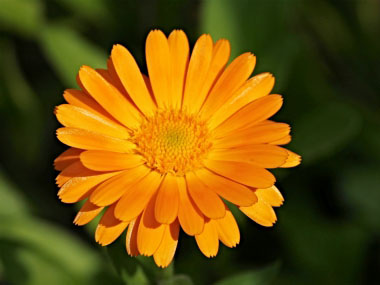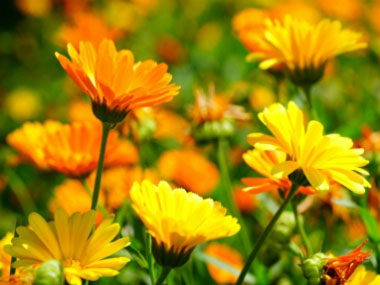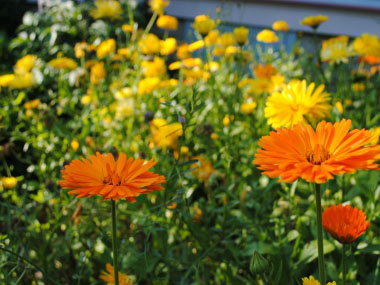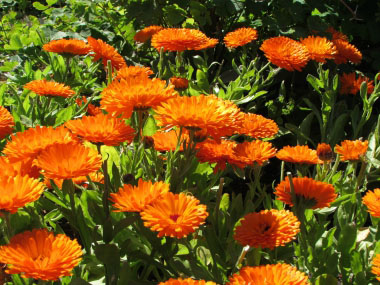





To support our efforts please browse our store (books with health benefits, etc.).
Calendula, also known as pot marigold, is at the top of the most popular annuals in the garden list. Well known for its healing properties and edible flowers (leaves also), this flower looks great in any garden. Easy to grow, seeds can be started indoors in the late winter, or sow them directly into the garden in the spring. When you deadhead spent flowers it promotes the plant to produce additional blooms. This species is an Old World potherb and garden plant that was quite popular in England at the time of Shakespeare. This medicinal plant was mentioned back in the 12th century in the writings of the Saint Hildegard von Bingen.
 Fields
of Nutrition has medicinal benefits and vitamin/mineral content of Calendula.
Fields
of Nutrition has medicinal benefits and vitamin/mineral content of Calendula.
Seed Life Cycle
Annual.
Colours
Bright yellow to deep orange.
Height
Calendula usually grows from 45 to 61 cm (18 to 24") tall.
Health Benefits
This flower has been used for centuries, both internally and topically, to heal wounds, burns, and rashes. The cheerful flowers are a traditional remedy for supporting the immune system. The antibacterial and anti-inflammatory properties of calendula make it a good face wash for dry, irritated skin and acne. Fresh calendula petals can also be infused in boiling water and used to treat minor infections, conjunctivitis, and mouth sores. The edible ray florets of the flower heads have antioxidant compounds.
Dye
Depending on the fibre and the mordant, calendula flowers produce light, lemon yellows, olive/browns, and light browns.
Recipes
Winter Survival Food Handbook

PDF Plant Magazines
Types of Wild Food
Geographic Zones Seasons
Disclaimer
EdibleWildFood.com is informational in nature. While we strive to be 100% accurate, it is solely up to the reader to ensure proper plant identification. Some wild plants are poisonous or can have serious adverse health effects.
We are not health professionals, medical doctors, nor are we nutritionists. It is up to the reader to verify nutritional information and health benefits with qualified professionals for all edible plants listed in this web site. Please click here for more information.
Why Edible Wild Food?
- Food costs are rising
- Free, wild food is readily abundant
- Wild food adds nutrition to your diet
- Wild food can help treat various medical conditions





